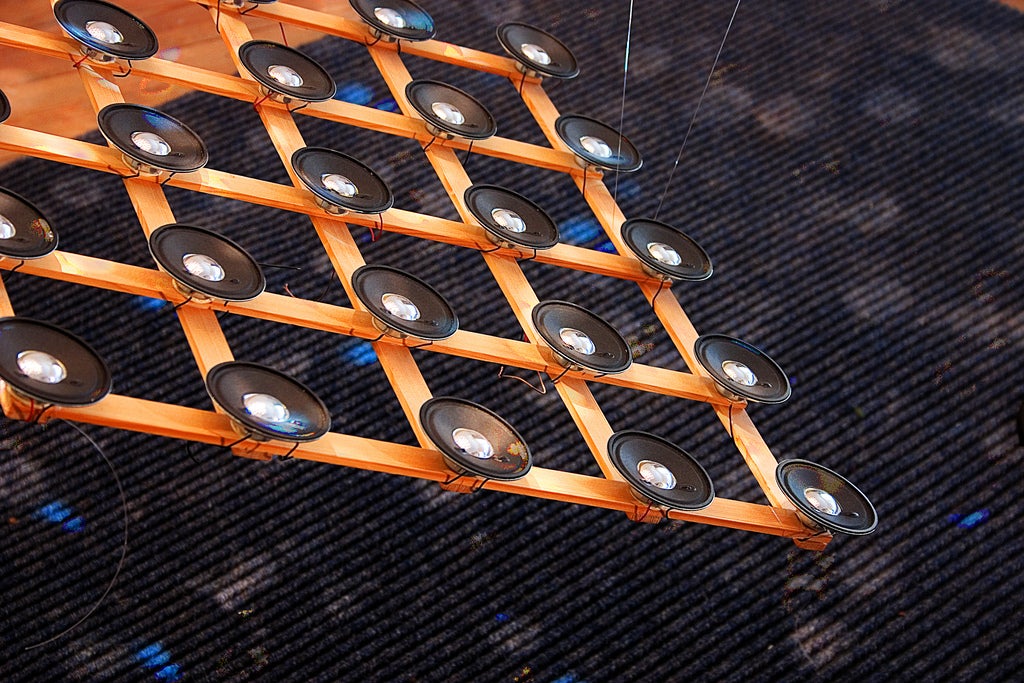Scientists create computer virus that transfers stolen data using inaudible sounds
The malware has a low data transmission rate, but could be used to send passwords and login information

Your support helps us to tell the story
From reproductive rights to climate change to Big Tech, The Independent is on the ground when the story is developing. Whether it's investigating the financials of Elon Musk's pro-Trump PAC or producing our latest documentary, 'The A Word', which shines a light on the American women fighting for reproductive rights, we know how important it is to parse out the facts from the messaging.
At such a critical moment in US history, we need reporters on the ground. Your donation allows us to keep sending journalists to speak to both sides of the story.
The Independent is trusted by Americans across the entire political spectrum. And unlike many other quality news outlets, we choose not to lock Americans out of our reporting and analysis with paywalls. We believe quality journalism should be available to everyone, paid for by those who can afford it.
Your support makes all the difference.Computer scientists from Germany have developed a new form of malware that can transmit data from hacked computers using an audio signal inaudible to humans.
Just using the built-in speakers and microphone in a pair of commercially available laptops, the researchers were able to transfer small amounts of sensitive data across a distance of almost 65 feet.
The team involved also predicted that this distance could be increased significantly using a network of controlled devices to relay the data acoustically.
The discovery is of particular relevance to high-security computer networks where sensitive data is often protected with an “air gap”, meaning that the devices are physically disconnected from any networks, including the internet.
Fortunately for the governments and large institutions that use these measures, the target computer still has to be infected with malware via more traditional means before it can transmit data.
The research was published in the Journal of Communications, and was led by a team from Germany’s Fraunhofer Institute for Communication, Information Processing, and Ergonomics.
Speaking to technology site Ars Technica, Michael Hanspach, one of the paper’s authors, said that the proof-of-concept software they had developed meant that air gaps “can be considered obsolete.”
“Over this covert network, information can travel over multiple hops of infected nodes, connecting completely isolated computing systems and networks (e.g. the internet) to each other,” said Hanspach.
The procedures used to transfer the data over sound waves were based on software developed by Germany’s Research Department for Underwater Acoustics and Geophysics to communicate acoustically underwater.
One significant drawback of the software is that the data transmission rate was only 20 bits per second - enough to send basic text, but too small to transfer any larger multimedia, such as video. The researchers, however, do not think that this is much of a problem:
“This small bandwidth might actually be enough to transfer critical information (such as keystrokes)," Hanspach told Ars Technica. "And you could forward any small-sized information such as private encryption keys or maybe malicious commands to an infected piece of construction."
It’s unlikely that this new technique will be of any use to commercial hackers (creating an acoustic mesh to transfer stolen information would be extremely inefficient compared to simply connecting via the web) but state-sponsored hackers might consider adding this to their arsenal.
Hanspach and his team did also suggest a number of countermeasures, including using audio software that filters out high-range frequencies or simply disconnecting any speakers and microphones connected to a computer.
Join our commenting forum
Join thought-provoking conversations, follow other Independent readers and see their replies
Comments